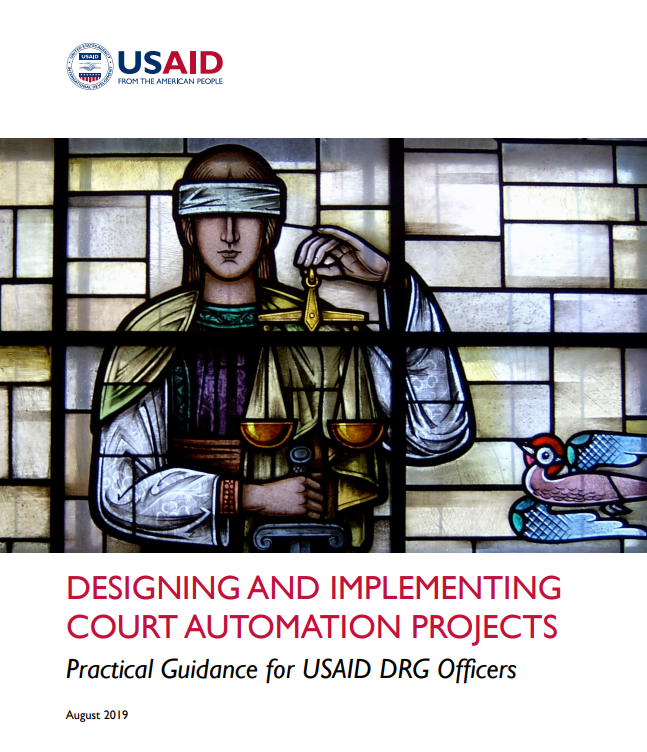
Key Technical Resources

Rule of Law IDEAS CoLab
The Rule of Law IDEAS CoLab is an innovation hub reimagining justice. We design people-centered, data-driven solutions, offer practical tools and resources, and host the xUSAID Rule of Law Repository—all to help close the global justice gap and build trust in legal systems.

Crime and Prevention Field Guide (Updated)
This Crime and Violence Prevention Field Guide (“Field Guide”) is designed to support USAID officers and other practitioners in the LAC region who are working on citizen security and in other sectors in which crime and violence prevention can be mainstreamed. It provides a conceptual framework for understanding crime, violence, and prevention as part of broader citizen security systems; evidence-based information about effective interventions to prevent crime and violence; and practical advice and tools on how to design, implement, measure, and evaluate crime and violence prevention and citizen security projects. T

Rule of Law Practitioner's Guide
This Guide is designed for USAID personnel engaged in the day to day practice of Rule of Law (ROL) programming. The Guide serves as an adjunct document and should be used alongside the ROL Framework, not in place of it. The Guide summarizes new learning, describes available resources, but does not prescribe any one practice over another.

Designing and Implementing Court Automation Projects Guide
This guidance manual is based on reviews of reports, evaluations and assessments from numerous USAID projects from around the globe, as well as key informant interviews with DRG officers, chiefs of parties, court administrators, and others who have previously implemented or are currently implementing court automation projects. It has also been informed by the authors’ own experiences in designing, implementing, and managing multiple automation projects.

Integrating Rule of Law and Global Development: Food Security, Climate Change, and Public Health
This guide is intended to change that view. The promotion of the rule of law, especially when founded on a human rights-based approach, can significantly advance objectives in each of these fields. This guide demonstrates the fundamental connection between rule of law and human rights and food security, public health, and climate change. It makes specific recommendations for rule of law programs and provides case studies that demonstrate the value of legal strategies in each context.

Guide to Rule of Law Country Analysis: The Rule of Law Strategic Framework
This document offers accumulated wisdom to USAID democracy and governance (DG) officers and other USAID staff who are developing strategies to address weak or inadequate justice systems. It provides a conceptual framework for analyzing challenges to the rule of law, as well as guidelines for conducting a justice sector assessment and for designing and prioritizing program interventions.

Reducing Corruption in the Judiciary
The linkages between poverty reduction, economic growth, and democratic governance are firmly established in current development thinking, backed by persuasive research. Equally well established the recognition by scholars, policy makers, and development practitioners of the central importance of the rule o law and the control of corruption successfully addressing the related challenges of social, economic and political development.

USAID Legal Empowerment of the Poor: From Concepts to Assessment
The relatively modest literature that bears an explicit “legal empowerment of the poor (LEP)” tag has developed since 2000. It came into being in reaction to what was seen as an excessively narrow concept of legal and judicial reform in the rule of law literature.1 A number of LEP strategies (law reform, judicial reform, legal aid and literacy, democratization, and formalization) are currently jockeying for position within the general concept, which is as yet poorly bounded and integrated.

Rebuilding the Rule of Law in Post-Conflict Environments
This guide provides practical guidance on rule of law programming in post-conflict environments. It reflects over twenty years of experience working in post-conflict environments, and presents the key challenges, lessons learned, and programming options for advancing rule of law development objectives in these environments. It is hoped that this guide will facilitate effective analysis, planning and programming that contribute to the strengthening of the rule of law in post-conflict societies.

Alternative Dispute Resolution Guide
This Guide is intended to provide an introduction to the broad range of systems that operate under the rubric of Alternative Dispute Resolution (ADR). It is designed to explore and clarify the potential uses and benefits of ADR and the conditions under which ADR programs can succeed.
Missing Resource Form
See something missing? Want to add a missing resource? Fill out the form below. Thank you in advance.
